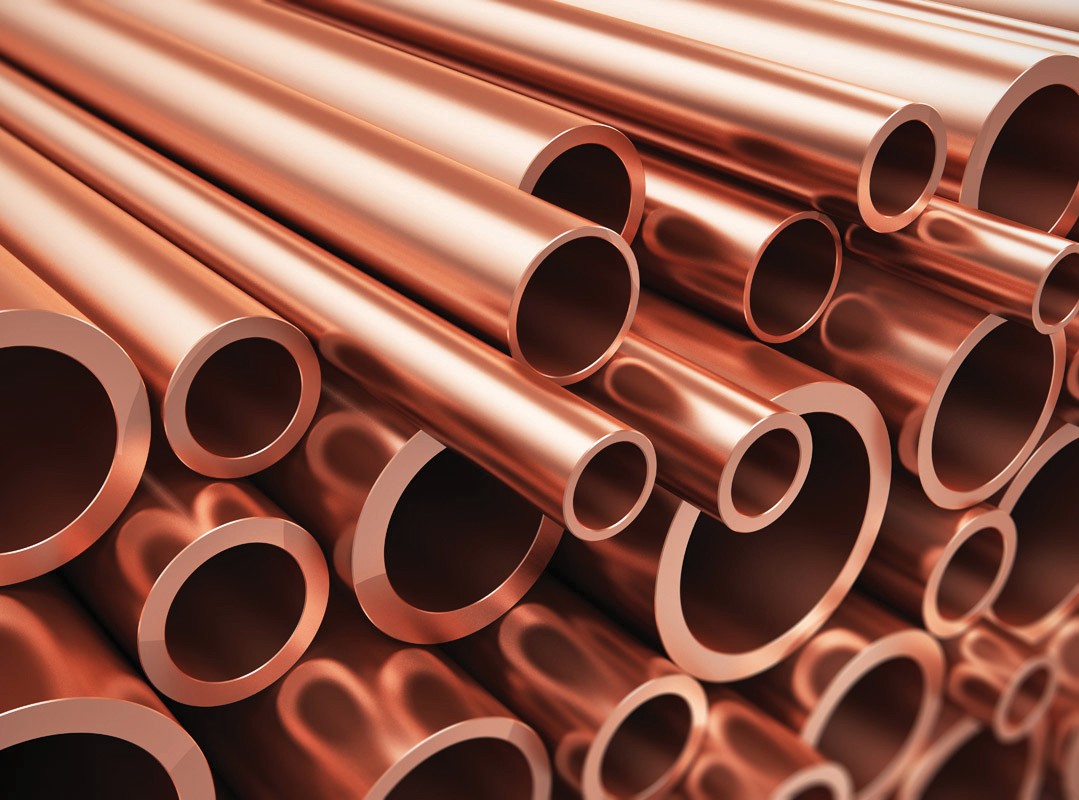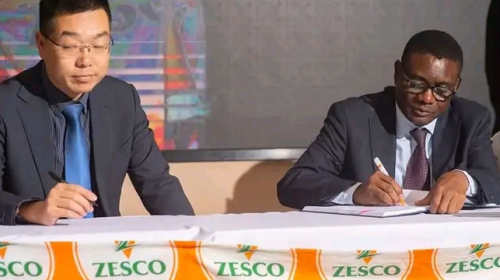Lookout for These Five Copper Price Trends in 2020
Looking ahead to 2020, copper is facing a very balanced market. Investors’ positive sentiment regarding copper fundamentals is currently supporting higher prices, Wood and Metal Mining research and advisory group Wood Mackenzie said in a research note on Wednesday.
The stronger growth in demand will be underpinned by new semi-finished product capacities, while the growth of the mine supply will depend on both projects and existing mines.
The recent approval of new standards for re-categorizing copper scrap in China could determine the mix of copper raw material imports into the country and affect global scrap dynamics, said Wood Mackenzie.
These fundamental factors, along with the strong geopolitical headwind in the global landscape, will no doubt lead to another year of volatile prices. In the absence of a major economic downturn, favorable copper fundamentals should push up price risk, the company said.
Eleni Joannides, principal analyst at Wood Mackenzie, sees five key issues to be watched in the global copper market in 2020.
1.Copper prices – fundamentals vs. Mood
“In 2019, copper prices were mostly driven by US-China trade news, not by copper’s own fundamentals. The mood did not change until the phase 1 trade agreement between the United States and China was agreed in December, ”said Joannides.
“With regard to 2020, there is a risk that other factors will influence the price again. The geopolitical problems that have arisen since the beginning of the year could cause the rally that started in December 2019 to fail. On the other hand, further progress in settling trade disputes should lead to a faster than expected recovery in demand and underpin prices, ”added Joannides.
“For this year we expect a positive 1.3% growth in the supply of mines – after disruptions – to be offset by a recovery in demand. The resulting decline in total cathode stocks at the end of the year should have a favorable effect on prices. “
2. Policies and politics that will boost copper demand
Wood Mackenzie said that different incentives to renewable technologies will have different impacts on copper demand in 2020.
THE LAST APPROVAL OF NEW STANDARDS FOR THE NEW CATEGORIZATION OF COPPER SCRATCHES IN CHINA COULD STILL DETERMINE THE IMPORTATION OF COPPER RAW MATERIALS INTO THE COUNTRY
“The contributions to copper demand from electromobility and renewable energies will be a long-term story. In 2020, a number of incentives to accelerate, stop and reverse will be used in electric vehicles, wind and solar projects. In some cases, this will affect project development. In other cases, however, there could be a frontloading of projects before the subsidies are further reduced.
“The Chinese government recently announced that it has no plans to further reduce the subsidy for electric vehicles in 2020. We believe that the decision to maintain the subsidy will help support sales, production and related copper demand for electric vehicles in 2020.
“This change in approach to electric vehicles in China is in line with developments in other regions. In Europe, Germany and Norway continue to increase incentives for electric vehicles and support copper consumption in the region. In consultation with German car manufacturers, the so-called “environmental bonus” for battery electric vehicles costing up to 40,000 euros was raised to a maximum of 6,000 euros. In the United States, some states have expanded their subsidy offerings, while others have introduced similar incentive programs.
3: Global scrap dynamics will change in response to changes in Chinese scrap policies for imports
“In the renewable energy markets, the Chinese government plans to end subsidies for newly approved onshore and offshore wind projects in 2021 and 2022, respectively. In the US, tax incentives for new solar power plants have gradually waned this year, and subsidies for wind power generation will also decrease gradually next year. As a result, we believe copper demand will increase in both China and the United States in 2020 as developers hurry to install new capacity before these changes, ” said Joannides.
Wood Mackenzie warns that a shift in global scrap dynamics could occur in response to changes in Chinese scrap policy.
“The Chinese government recently passed new standards in July 2020 that classify some copper scrap as” renewable copper material, “said Joannides.
“The new threshold for the copper content of imported copper scrap was set at 97% and for brass scrap at 56%. This threshold is noticeably above the average copper content of copper and brass scrap that was introduced in 2019. However, the copper industry in China was optimistic about scrap imports this year.
“Given that the inspection is largely done by visual inspection in ports, it is generally assumed that the implementation of the new standards will leave some space for scrap that is just below the import threshold. However, the risk is that scrap processors will have to make additional efforts to meet the requirements if Chinese customs strictly enforces the new standards and in accordance with the guidelines. This means that China can get less scrap from the foreign market this year.
A tighter concentrated market in 2019 forced TC / RCS to its lowest level in six years. The benchmark for 2020 was $ 62 / t and 6.2 ° C / lb – a decrease of 23%
“In addition to the changes in scrap policy in China, rising costs of upgrading scrap before exporting to China are likely to result in more secondary consumption capacity building in countries that produce and / or process scrap. We have already seen the first examples of this worldwide. It remains to be seen whether this will be the beginning of a trend that will affect not only the amount of scrap available in China but also the need for concentrate, blister / anode and copper cathode, ” said Joannides.
“The new threshold for the copper content of imported copper scrap was set at 97% and for brass scrap at 56%. This threshold is noticeably above the average copper content of copper and brass scrap that was introduced in 2019. However, the copper industry in China was optimistic about scrap imports this year.
4: The supply from mines seems set to grow again
The supply of the mines, partly driven by the delivery of new projects, is expected to return to growth. It is fundamental for Wood Mackenzie that the mine supply will reach 21 million tons in 2020 – after an allowance of 5%. Remarkably, about 40% of the additional production capacity is caused by an increase in the net yield of the mines in operation.
“Projects started in 2019 will support higher production as they reach their full potential in the coming year. Similarly, the increase in brownfield expansion and expansion will contribute to a significant increase in supply. New projects that are slated to start in 2020 will also do their part, ”added Joannides.
“The Glencore-Mutanda mine in the DR Congo will be the largest planned decrease in production in 2020. This corresponds to an annual reduction in copper deposits of 100 kt.”
As in previous years, Wood Mackenzie assumes that a significant proportion of the copper supply will be lost due to unexpected disruptions. In addition to unforeseen operational and weather-related problems, social and political factors are of central importance for the provision of risk.
“About 40% of the total disruption reported in 2019 was in mines in the African copper belt. In both cases, however, the environment now appears to be more stable. The initial upheavals caused by changes in tax and mining regulations in Zambia and the Democratic Republic of the Congo have subsided as the mining industry has resigned itself to changes in the operating environment.
“The more immediate problem for Zambia is now the power supply with a critically low water level in the country’s hydropower plants,” said Joannides.
5: Lower TC / RCs could attract some smelters
Wood Mackenzie said, “lower treatment charges (TC) and refining charges (RC), might impress some copper smelters.
“A tight concentrate market in 2019 forced TC / RCs to the lowest level in six years. The 2020 benchmark was set at $ 62 / t & 6.2c / lb – a 23% drop from the 2019 benchmark and the fifth year of declining treatment charges.
“Our latest concentrate balance implies a deficit for 2020, with the addition of primary smelting capacity surpassing the growth in mining supply.
Joannides says with a lower annual TC / RC benchmark and very low acid prices, some smelters in China are fairly close to the break-even point. Therefore, the smelter economy will have an impact on the amount of available capacity in 2020.
“Outside of China, apart from an ongoing strike at Asarco’s Hayden smelter in the US, the smelter’s halt has so far been limited to planned maintenance. Chile now has the ability to reach full capacity following the environmental renovation in 2019, “says Joannides.





